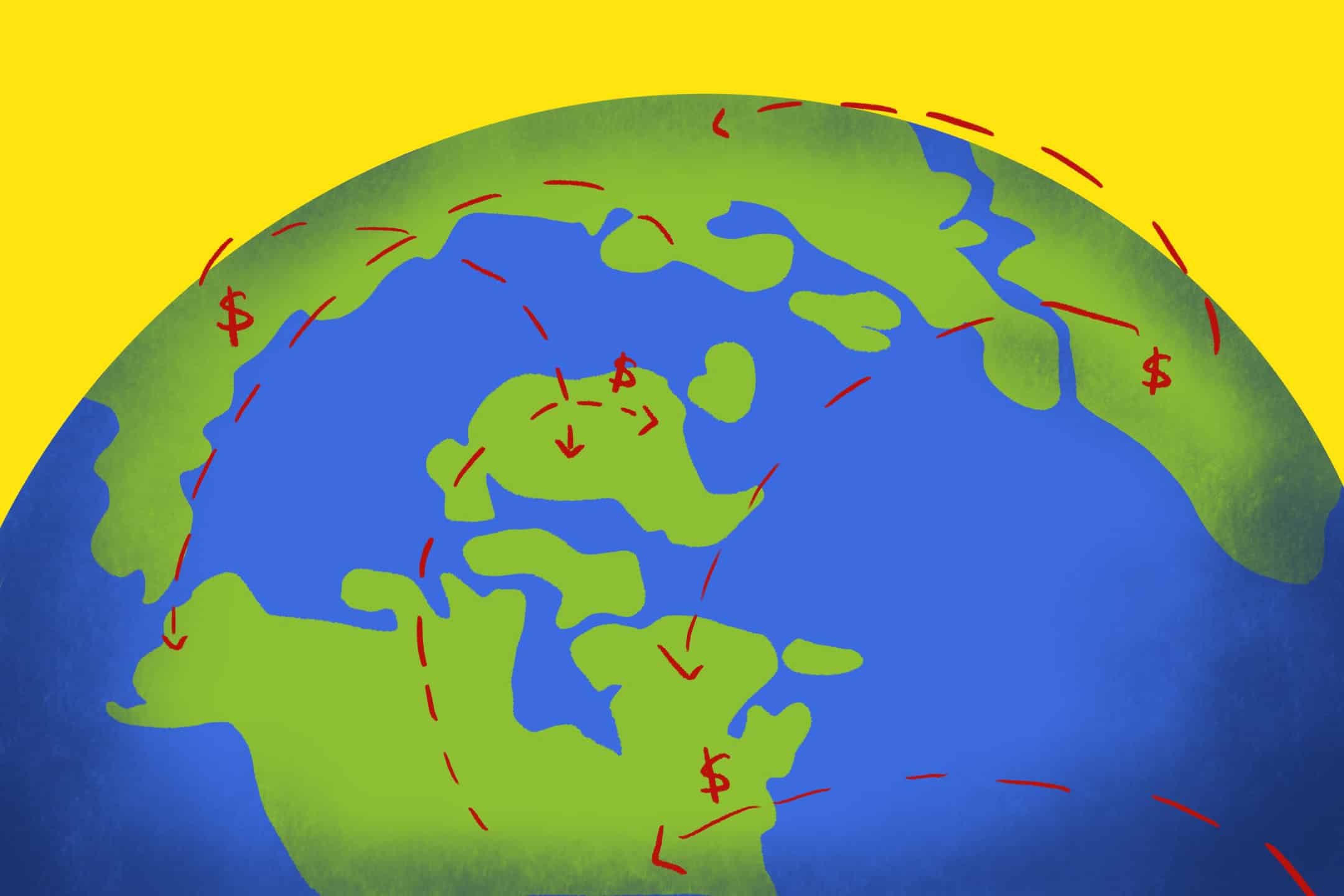According to a 2024 study published in the journal Nature, “heatflation”— the portion of inflation caused by the climate crisis — could cause global food prices to rise by up to three per cent annually by 2035.
Heatflation is impacting agricultural yields and supply chains — the process various individuals and companies work through to bring products to the consumer. Supply chain jams and reduced agricultural yields contribute to rising living costs, particularly regarding grocery prices.
The Varsity interviewed four U of T students who are not on a campus meal plan to discuss heatflation and its impact on their experiences.
Supply chain log jams and reduced agricultural yield
Drought has caused water levels to drop in certain locations, such as the Panama Canal — where five per cent of world trade takes place. This caused the canal’s authorities to limit the number of cargo ships that could pass. Shipping companies are consequently either spending more to skip the queue or taking longer indirect routes, which can cost them approximately $30,000 for every extra day at sea. As climate crisis-induced droughts force companies to increase shipping expenses, they consequently raise their in-store product prices to maintain their profit margin.
The climate crisis has drastically changed agricultural yields as drought conditions reduce the growth rates of raw produce, driving prices upward. Kitchen staples such as rice and olive products are examples of food that has become scarcer due to the crisis. In a 2024 study published by ScienceDirect, it was found that “for every 1°C and 1 [per cent] increase in average temperature and precipitation, rice yield decreased by 3.85 [per cent] and 0.56 [per cent], respectively.”
Rising grocery prices in Canada
As the climate crisis causes supply chain and agricultural yield issues, grocery prices are inevitably rising. The Bank of Canada reported this March that grocery prices had risen by almost 22 per cent between February 2021 and February 2024.
At the beginning of 2024, Eric La Flèche, the chief executive officer of the grocery store chain Metro Inc., explained that suppliers are requesting price increases. Food items like orange juice will see price hikes as orange crops have become scarcer due to droughts. The pressure from suppliers to raise prices in grocery stores is closely related to the worsening agricultural yield and increasing shipping costs due to supply chain log jams.
Another grocery chain, Loblaw Companies Ltd., is experiencing a similar situation. At the end of 2023, its Chief Financial Officer, Richard Dufresne, stated that, “… with lower supplier costs, we can lower prices on the shelf for customers. Unfortunately, several large global suppliers are still coming with higher-than-expected cost increases in the next year”.
What U of T students think of heatflation
As the effects of the heatflation drive grocery stores to send prices skyward, university students living off-campus who have to buy their own groceries may feel particularly worried.
In an interview with The Varsity, four U of T students who live off-campus without a meal plan agreed that the rising cost of groceries is pushing them to seek less expensive options. Their experiences span various grocers, including Metro, Loblaws, T&T, Shoppers, Walmart, and FreshCo.
Second-year psychology and neuroscience major Liliana Castiblanco shared, “I am supported financially by my family… so [affording] to live in Toronto is not a major personal concern. If I had to personally generate the income to afford groceries, rent, and tuition, I would find it impossible to continue my studies effectively.”
The other interviewees share similar sentiments about the costs of living and how they turn to more affordable alternatives:
“I use a Chinese [grocery delivery] app… called Xiaohong Mall,” said fourth-year student Alison Mak. Second-year student Megan Huynh also noted that she shops at Metro for the student discount, while first-year student Jianan (Canaan) Li mentioned that he goes to Walmart for better prices.
Huynh mentioned that she knew the climate crisis had “countless horrible effects,” but it never “crossed [her] mind of how it would affect the economy, or consumers specifically.” Li agreed, saying that he was surprised at how the cost of food prices is related to the climate crisis.
On the other hand, Castiblanco shared that she had already recognized that “the increase in price likely came from the climate [crisis] .” She explained that, “as regions are affected by the climate [crisis], it has become harder to predict the optimal seasons for effective agricultural production of different products,” which can create “an issue of food scarcity that likely affects grocery prices.” She further added, “the repercussions of changing temperatures can have more effects on individual lives than most people realize.”
Huynh echoed Castiblanco’s sentiments and called for government action: “I believe that more action on the federal level needs to be taken to slow the rapidly intensifying effects of [the] climate crisis.”



No comments to display.